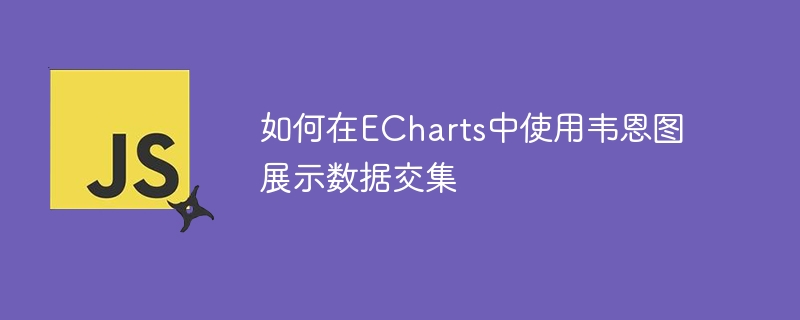

How to use Venn diagram to display data intersection in ECharts
Venn Diagram is a commonly used graphical tool used to display the intersection of different sets. the intersection relationship between. In the field of data visualization, ECharts is an excellent open source visualization library that supports a variety of chart types. This article will introduce how to use ECharts to draw a Venn diagram to show the relationship between data intersections.
ECharts is a visualization library developed by Baidu for displaying data. It is based on JavaScript language and provides rich chart types and interactive functions. ECharts has good compatibility, customizability and powerful expansion capabilities, so it has been widely used in the field of data visualization.
Before we start, we need to introduce the ECharts library into the project and create a DOM element for displaying the Venn diagram. If you have not installed ECharts, you can refer to the official documentation to install it.
The Venn diagram data is generally composed of several sets, each set corresponding to a circle. We can use an array to represent these collections. Each element in the array is an object and contains the following attributes:
The following is a sample data:
var data = [
{ name: 'Set A', value: [1, 2, 3, 4, 5] },
{ name: 'Set B', value: [4, 5, 6, 7, 8] },
{ name: 'Set C', value: [5, 6, 7, 8, 9] }
];First, we need to create a basic ECharts instance and set up some basic Configuration items:
var chart = echarts.init(document.getElementById('chart'));
var option = {
series: [
{
type: 'venn',
data: data
}
]
};
chart.setOption(option); In the above code, echarts.init() is used to create an ECharts instance, passing in a DOM element as a parameter, document.getElementById('chart ') obtains the DOM element used to display the chart. Then, we define a configuration item option, in which the series attribute represents the series of the chart. Here we use type: 'venn' to represent the chart to be drawn. The type is Venn diagram, and the data attribute is used to specify the data of the Venn diagram.
Finally, use chart.setOption(option) to apply the configuration item to the chart to draw a Venn diagram.
The above code can draw a basic Venn diagram, but you can also make some customized settings to make the chart more beautiful and easier to read.
var option = {
series: [
{
type: 'venn',
data: data,
label: {
show: true,
textStyle: {
color: '#333',
fontSize: 12
}
},
itemStyle: {
color: '#99CCFF',
borderWidth: 1,
borderColor: '#666'
},
emphasis: {
label: {
show: true
},
itemStyle: {
color: '#FF6600',
borderWidth: 2,
borderColor: '#000'
}
}
}
]
};In the above code, we use the label attribute to display the name of the collection and set the text style. Use the itemStyle properties to set the collection's color, border width, and color. Use the emphasis property to style the mouseover.
This article introduces how to use the ECharts library to draw a Venn diagram to show the relationship between data intersections. First, we need to introduce the ECharts library into the project and prepare the DOM elements used to display the Venn diagram. Then, prepare the Venn diagram data. Next, create an ECharts instance and set some basic configuration items. Finally, use chart.setOption(option) to apply the configuration item to the chart to draw a Venn diagram.
At the same time, we also provide some customized settings to make the Venn diagram more beautiful and easy to read.
I hope this article can help you and provide some reference and guidance on using ECharts to display data intersection. For more information on how to use ECharts and examples, please refer to the official documentation.
The above is the detailed content of How to use Venn diagram to display data intersection in ECharts. For more information, please follow other related articles on the PHP Chinese website!




